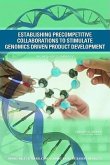Robust biomedical research in the United States has led to many advances in modern medicine. Our current knowledge of genomics and proteomics has opened the door for many new technologies, which often merge several disciplines, such as molecular biology, biochemistry, and bioinformatics. One of those ever evolving technologies is protein X-ray crystallography which allows visualization of macromolecular structures at the atomic level and accurate determination of protein structures. An understanding of protein structure and function, brought about by structural genomics research, could have implications in civilian and military medicine with applications in new drug developments, enhanced vaccination efficacies and biological warfare agent neutralization. More specifically, knowing the structure of an enzyme, could lead to designing of a molecule that would bind to the active site of the enzyme and either activate or deactivate its action. This approach could be used in structural and functional analysis of proteins and may possibly play a role in diabetes, viral and bacterial infections, cancer and biotoxin action mechanisms. Third-generation synchrotrons, such as the one at the Argonne National Laboratory's Advance Photon Source, allow scientists to determine the three-dimensional protein structures at the highest resolution. Additionally, high-throughput structural genomics laboratories, such as Argonne's Midwest Center for Structural Genomics, make protein structures available for further studies to scientists around the world by rapidly solving and depositing them into protein databases. This work has been selected by scholars as being culturally important, and is part of the knowledge base of civilization as we know it. This work was reproduced from the original artifact, and remains as true to the original work as possible. Therefore, you will see the original copyright references, library stamps (as most of these works have been housed in our most important libraries around the world), and other notations in the work. This work is in the public domain in the United States of America, and possibly other nations. Within the United States, you may freely copy and distribute this work, as no entity (individual or corporate) has a copyright on the body of the work. As a reproduction of a historical artifact, this work may contain missing or blurred pages, poor pictures, errant marks, etc. Scholars believe, and we concur, that this work is important enough to be preserved, reproduced, and made generally available to the public. We appreciate your support of the preservation process, and thank you for being an important part of keeping this knowledge alive and relevant.
Bitte wählen Sie Ihr Anliegen aus.
Rechnungen
Retourenschein anfordern
Bestellstatus
Storno








